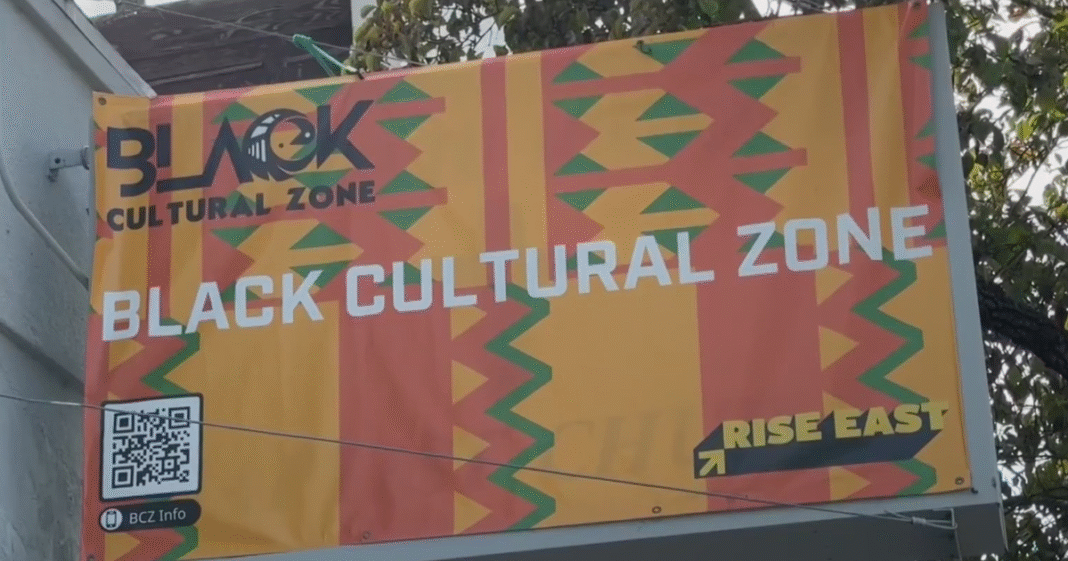A Journey Through East Oakland: Revitalizing Community and Culture
Ari Curry, the deputy director of media and communications for the Black Cultural Zone, recently took a stroll through the familiar streets of East Oakland, the neighborhood where he grew up. As he walked, he reflected on the significance of the area, stating, “For me, this is personal. East Oakland is part of who I am, and I’ve been really fortunate.” His connection to the community is palpable, driving his passion for the initiatives being undertaken to revitalize it.
The Rise East 40×40 Project
The Black Cultural Zone is actively involved in a revitalization initiative known as the Rise East 40×40 project, which aims to transform the stretch from Seminary Avenue to the Oakland-San Leandro border. Under this initiative, the nonprofit organization has successfully raised a remarkable $100 million. This funding is not just a number; it’s a lifeline, set to fuel resources like health care and workforce development, as well as exciting developments including a food market hall and over 100 units of affordable housing.
CJ Johnson, the CEO of the Black Cultural Zone, elaborates on the overarching vision: “The long-term goal for me and the Black Cultural Zone is to create about 12 districts in the area that represent the East Oakland Black Cultural Zone, which is comparable to Manhattan.” The plans are ambitious, intending to rejuvenate the Liberation Park district into a vibrant entertainment zone.
Addressing Historical Inequities
One of the critical motivations behind this revitalization is the persistent inequities faced by the predominantly African American residents of East Oakland. For years, community members have grappled with disinvestment, leading to a lack of access to essential services—be it grocery stores, quality education, or safe public spaces. Johnson poignantly states, “Forced to live here as things were disinvested,” highlighting the historical context of systemic neglect that has characterized the area.
The scars of past foreclosures and community disinvestment are evident, but the Black Cultural Zone is determined to transform the landscape. Johnson emphasizes a hopeful vision: “We look forward to revitalizing the vacant storefronts near Liberation Park, which are riddled with graffiti, into safe spaces for the community.” This sentiment resonates deeply with many who long for a return to the tight-knit, supportive environment they once knew.
Building a Sense of Community
The essence of community is at the heart of this revitalization effort. Johnson recalls her own childhood experiences, where neighbors played vital roles in everyday life, saying, “You need Auntie around the corner to take care of the little kid while you grab something from the store.” This close-knit fabric of community is something she and others in the initiative aspire to resurrect through sustainable development.
Plans for the 40×40 neighborhood include community gardens, movie halls, and diverse local businesses, all aimed at cultivating a sense of belonging and ownership among residents. Johnson noted that the project is expected to be completed in five years, but the transformations in community spirit and engagement are already palpable.
A Vision for the Future
As the Black Cultural Zone embraces the complexity of revitalization, its leaders emphasize the importance of equitable development. The initiative is not merely about creating new physical spaces but about ensuring that the transformation reflects the needs and dreams of the existing community. The vision of the 40×40 project aligns with a broader aim to reclaim the cultural identity of East Oakland while providing lasting benefits for its residents.
In the spirit of community collaboration, the Black Cultural Zone remains committed to engaging local voices throughout the development process, fostering a future where past injustices are addressed, and vibrant community life can flourish once more.
This journey through East Oakland is not just a reflection of its challenges; it is a testament to the resilience and determination of a community seeking to reclaim its narrative and build a better future for generations to come.



